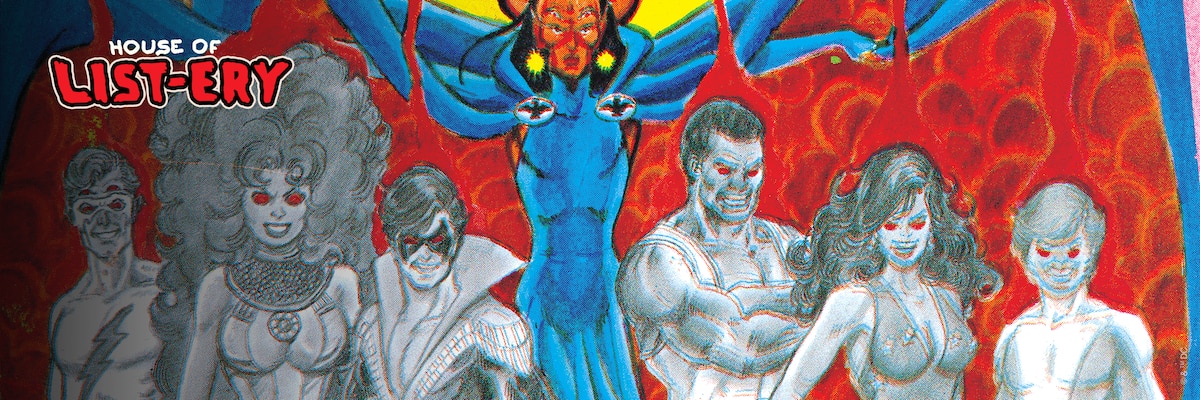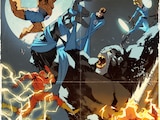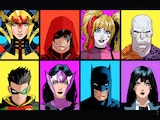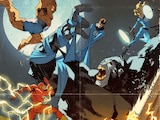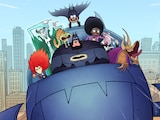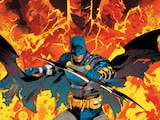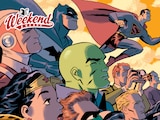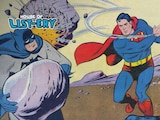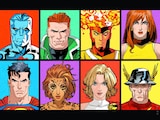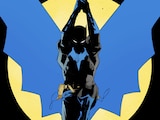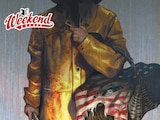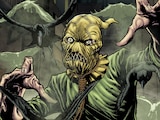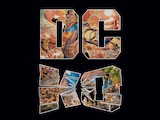It’s hard being a superhero. Maintaining society’s trust when you wear a mask and operate free of oversight and outside the law isn’t easy, so the last thing you need is some desperate supervillain donning your costume in the name of sowing chaos. For most people, seeing is believing, so the sight of Batman killing a couple of muggers or the Teen Titans murdering one of their own suggests one thing: our trusted heroes have broken bad.
Needless to say, putting a quick stop to it is essential. Let’s look at five instances where the DC heroes have battled dark versions of themselves and what sort of damage was done.


A Strange Encounter
One of Batman’s more insane archfoes is also seemingly his most normal in appearance. Professor Hugo Strange predates many of Gotham City’s most infamous rogues, initially conducting experiments on humans before becoming totally obsessed with the one man who’d defeated him in the past.
After capturing Batman and learning his secret identity, Strange sought to destroy Bruce Wayne and assume the mantle for himself. In 1983’s Batman #356, he went so far as to drug Wayne and attack him with robot duplicates of Alfred and Robin, while setting up his own makeshift Batcave underneath a replica of Wayne Manor! Dazed and confused, it took the aid of the real Robin for Batman to survive this encounter with the psychotic scientist, which wasn’t the last time he bedeviled the Caped Crusader in a twisted image of his own bat-like self.
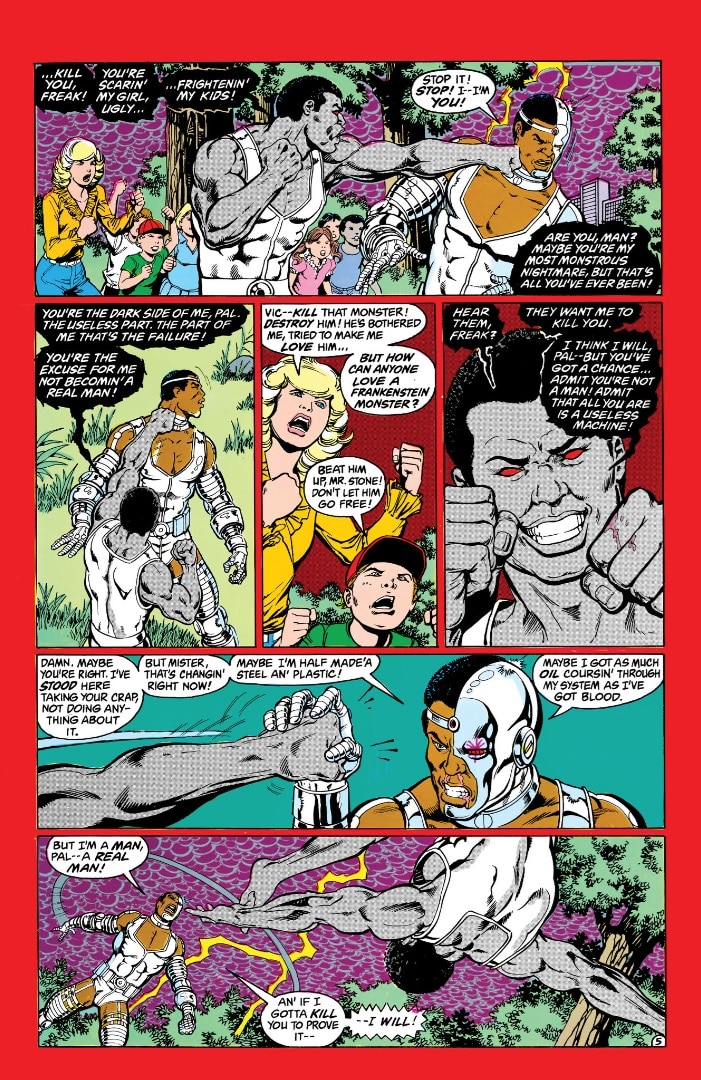

Terror of the Titans
The Teen Titans’ near downfall truly was brought about by one of their own. In 1984’s The New Titans #4, Raven, daughter of Trigon the Terrible, had over time been slowly consumed by her father’s influence, growing colder and more distant until she could no longer withstand his awesome might and served as his vessel to conquer the planet. When the Titans jumped into action to rescue their friend and save the world, they were inundated with horrific visions of their worst selves, who taunted them over their most private insecurities.
Nightwing found himself sneered at by an evil doppelganger, who mocked Dick Grayson’s decision to step down as Robin and showed Nightwing images of a dead Batman failed by him and Jason Todd. Beast Boy was jeered at by his evil twin, who laughed at all the people Gar had lost over time, like his parents and the Doom Patrol. Cyborg was taunted by a perfect image of what he wished he could be, free from his father’s cybernetics and circuitry. Starfire was shown visions of her people thrust into slavery. And Wally West was assaulted with images of himself and Raven in a lover’s embrace, ridiculing Wally for a lifetime of indecision and inaction. It was these insecurities that nearly drove the Titans mad, with each member swearing to kill their darker selves. In so doing, they succumbed to the darkness themselves, killing Raven and unleashing Trigon on the world.
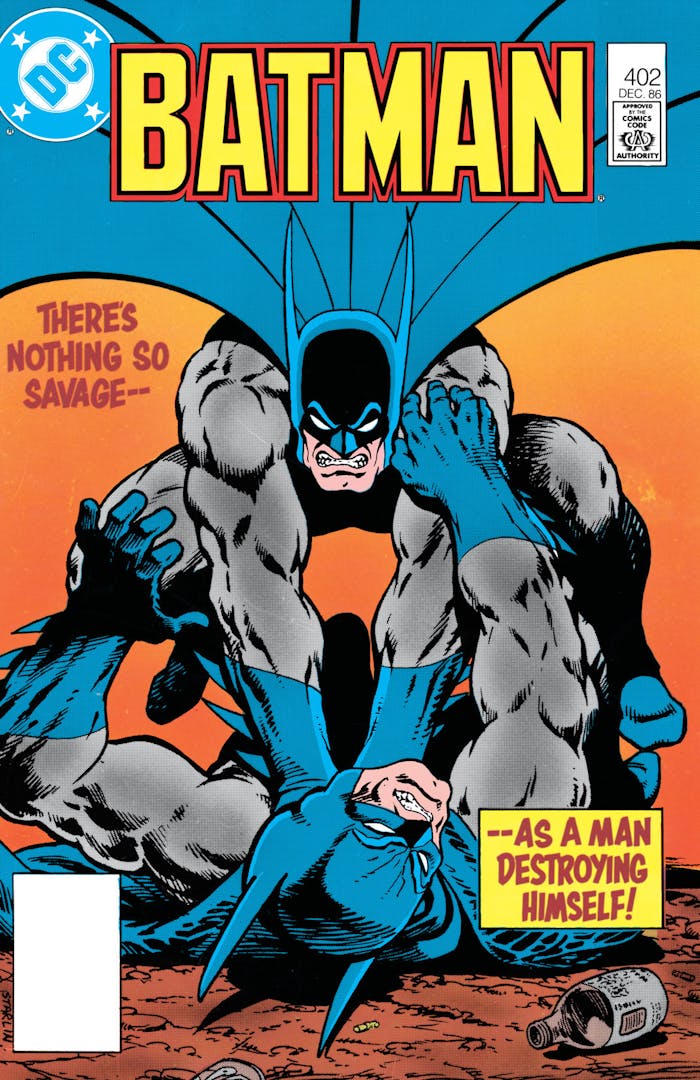

A Bad, Bad Bat
On an average Gotham City evening in 1986’s Batman #402, the Dark Knight stops a holdup involving two muggers…and proceeds to snap their necks.
Of course, Bruce Wayne would never resort to cold-blooded murder. Rather, it’s an imposter named Tommy Carma—a former police officer who grew up idolizing Batman. Tommy left the force after catching heat for his brutal methods and is now running around dressed as the Dark Knight and killing off any hood who escaped justice during his career due to Gotham’s ineffective or often corrupt legal system.
Tommy’s mind completely snaps when the real Batman catches up to him, but it isn’t until Robin shows up that he has a complete mental breakdown. We learn that his wife and young daughter were caught in a crossfire between criminals years ago, and he’d named his daughter “Robin.” It’s just enough of a distraction to allow the real Batman to subdue him, something that he admits proves harder than expected, for as he tells young Jason Todd, “Who am I but just another guy who thinks he’s the Batman?”


Wondering Why We Can’t Get Along
Years ago, Queen Hippolyta began having visons of her daughter Diana’s death. Fearful of her safety, she announced a new contest of Amazon champions for a hero who could succeed her daughter in the world of man. Secretly, she rigged the contest so that in the end, the victor was Artemis of Bana-Mighdall. Christened the brand-new Wonder Woman, Artemis returned to Man’s World and enacted a far more vigorous, violent campaign to overthrow evil.
Meanwhile, Princess Diana continued to fight crime in another costume and would soon start investigating the events circling Artemis’ adventures, learning that many of her fights were staged from behind the scenes. When Diana approaches Artemis with her findings in 1995’s Wonder Woman #98, Artemis attacks her sister, convinced that she’s jealous at her replacement’s progress. The battle rages across the city of Boston until Diana realizes who’s behind the entire charade—the White Magician. Ultimately, the two Amazons part ways, probably with neither of them too proud of the whole ordeal.


Green Lantern vs. Green Lantern vs. Green Lantern
Of all of the Justice League’s core members, none has a more troubled history than Hal Jordan. Originally believed by many to be the greatest Green Lantern of all time, the loss of Hal’s hometown of Coast City drove him to despair just long enough for the extraterrestrial parasite known as Parallax to take over his mind and turn him against his friends. Parallax destroyed the Green Lantern Corps and nearly reworked all of reality before he was stopped. In the end, the role of Green Lantern of Earth would be embodied by Kyle Rayner, and he would be Earth’s only Green Lantern…until Hal showed up again years later.
Not Hal as Parallax, mind you, but a younger version of Hal Jordan, plucked from the past and brought to the future. Things only grew more confusing when Parallax, time-displaced from his attempt to wipe out reality a few years prior, learned of his younger self’s jaunt into the future. In 1998’s Green Lantern #105 and #106, a battle ensues between Kyle, Hal and Hal, with Hal’s evil persona courting his younger self with promises of making the universe right.
In the end, everyone agrees the most important thing is to keep the timestream safe from any more meddling, and with the efforts of their power rings, everyone is sent back to where they rightfully belong, for better and worse.
Donovan Morgan Grant writes about comics, graphic novels and superhero history for DC.com. Follow him on Bluesky at @donomark and X at @donoDMG1.
NOTE: The views and opinions expressed in this feature are solely those of Donovan Morgan Grant and do not necessarily reflect those of DC or Warner Bros. Discovery, nor should they be read as confirmation or denial of future DC plans.
